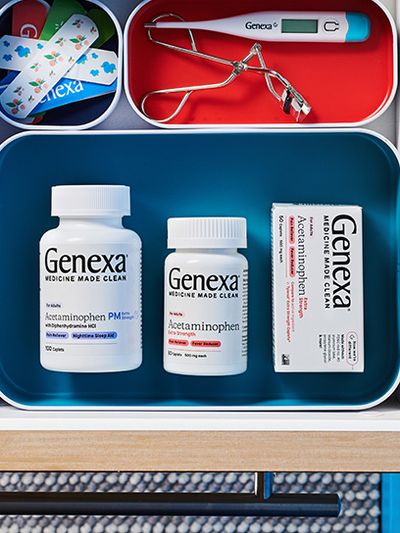Understanding Symptoms Of Constipation
Constipation & Diarrhea
Table of contents:
Although constipation among your little ones is common and can be really uncomfortable, it also can easily be treated.
In this article, we’ll break down the difference between diarrhea and constipation and then take a look at the symptoms of constipation and the common causes so you can get your little one feeling better in no time.
Constipation: An Overview
Constipation happens when your bowel movements become less frequent and passing stool becomes difficult. Although three bowel movements or less is the technical definition of constipation, it changes depending on your kid’s personal pooping pattern.
In order to process food, we move it through our digestive system and nutrients are absorbed along the way. Once food is fully digested, the leftover waste moves from the small intestine to the colon where water is absorbed to create solid stool.
When your kid is experiencing constipation, food is moving too slowly through their digestive system. This slow movement allows their colon too much time to absorb water from the stool. The result is stool that’s hard and dry, making it difficult to push out.
Diarrhea vs. Constipation
Although diarrhea and constipation are often talked about together, they are essentially complete opposites of one another. As opposed to the hard, dry, painful poop that accompanies constipation, diarrhea is characterized by watery and loose stool that often moves through your kid’s system quickly and frequently. Unlike constipation which has several causes, diarrhea is usually caused by an infection, a medication, or a food allergy of some sort, with infection being the most common cause.
Also different from constipation, diarrhea serves a purpose. It is the body’s way of expelling germs, which is why it’s usually a product of some kind of infection or unwanted food.
That being said, we all know it can be just as painful and uncomfortable for our kiddos.
Symptoms of Constipation
The main symptom of constipation is infrequent, painful bowel movements.
Alongside this type of bowel movement, other symptoms of constipation in kids include:
- Pain during bowel movements
- Tummy pain
- Blood in the surface of the stool
- Efforts to hold the stool in
- Traces of stool in your child’s underwear
Causes of Constipation
Much like with other illnesses like a stuffy nose or a cough, there are several causes of constipation. Some of the more common causes are:
- Diet. If your kid is lacking high-fiber foods, fruits, vegetables, or fluids in their diet, they might be more prone to constipation. Constipation also often accompanies the transition from a liquid diet to one with solid foods.
- Withholding. Sometimes kids feel uncomfortable pooping in toilets outside your home, and sometimes they purposefully put off going to the bathroom because they don’t want to stop playing. Another cause of withholding is fear that it will be painful to poop. Regardless of the cause, ignoring the need to use the restroom can often lead to constipation.
- Routine changes. Any major change in your kid’s life can make them more prone to constipation. Changes such as starting school, traveling, or high stress situations can all lead to constipation because the digestive system is closely linked to overall physical and psychological health.
- Allergies. Certain food allergies, specifically an allergy to cow’s milk or dairy products, can sometimes lead to constipation.
- Medication. There are several medications that can cause constipation in kids such as pain medications, antacids, and antidepressants. If your child is taking a medication that seems to be causing constipation, it’s a good idea to talk to your doctor.
Treatments
There are several ways to treat constipation at home that include dietary changes, activities, and over-the-counter medications that can help get your little one feeling better again. While more serious cases of constipation such as constipation that lasts over a week may require a doctor’s visit, for the most part it can be treated at home.
Remedies
- Have your child drink an increased amount of water, and try giving them dilute (with water) prune juice.
- Encourage your child to walk, run, or engage in some other form of physical activity. Exercise is one of the best ways to get their digestive system back on track and can help ease food through their bowels.
- Put the breaks on toilet training. If your kid is scared of using the toilet or for some reason resistant to toilet training, they are more likely to withhold their poop, which can lead to constipation. If you think this is happening, stop toilet training for the time being and give your child time to get back on a regular schedule.
- Make some dietary changes. Even if your child is not technically allergic to dairy products, it can upset their digestive tract and cause constipation. For this reason, if your kid is constipated, eliminate dairy and increase the amount of vegetables and fibrous foods they are eating even if for a week. It’s also a good idea to cut back the amount of junk food, fast food, and caffeine that your child is eating and drinking every day. All of these work to slow down digestion.
- Massage. Try massaging your child’s tummy in a clockwise fashion with warm sesame oil. This will help relax the muscles working to hold the stool in.
- Consider acupuncture, chiropractic or reflexology.
Medication
If the remedies above don’t work to ease your child’s constipation, you can offer them a gentle and clean laxative like Genexa’s Kids’ Senna Laxative. Genexa’s clean medicine is made with the same active ingredients found in common OTC laxatives, but without the artificial fillers. This laxative gently relieves occasional constipation and generally produces bowel movements in 6-12 hours, often being used overnight.
Although this medication is effective for relieving constipation and general irregularity in bowel movements, it shouldn’t be used for more than a week or if abdominal pain, nausea, or vomiting are present, which are additional signs it may be time to call your pediatrician.
Prevention Methods
While there are several effective ways to treat constipation, there are also a few prevention methods that you can use to avoid the problem in the first place. These include:
- Incorporating high-fiber foods into their diet. Whole-grain cereals, vegetables, and beans are all examples of high-fiber foods that you can offer your kid to keep them regular.
- Lots of fluids. Reminding your child to drink plenty of water is one of the best ways to ensure that they will have frequent, regular bowel movements. Although we all know kids love sugary sports drinks and juice, water is truly the best, healthiest fluid for them to drink the most on the regular.
- Make a routine. Given that many kids get wrapped up at playtime and ignore the need to use the restroom (or take any other kind of break), it can be helpful to establish a toilet routine whereby after every meal you encourage your child to go to the bathroom. This will serve as a good reminder to them that they need to listen to their bodies and go when they feel the urge.
- Encourage exercise. Regular physical activity is one of the best ways to ensure that your kid’s bowels are functioning properly. The big thing to remember is that they should stay hydrated when exercising.
When should I see my doctor?
The best way to know if you should see your doctor about your child’s constipation is if it isn’t relieved by a laxative. Other signs that you should contact your doctor are if your kid experiences fever, abdominal swelling, blood in the stool, weight loss, or loss of appetite.
If you go to see a doctor regarding your child’s constipation, they are likely to conduct a physical exam. If it’s a severe case, they may take an X-ray and run other tests.
Conclusion
Constipation is a common ailment in kids that is characterized by infrequent bowel movements and hard stool. There are a wide variety of causes of constipation, but some of the most common include diets that are low in fiber and withholding.
Luckily, constipation is easy to treat at home with gentle laxatives and other remedies such as physical activity and increased fluid intake.






